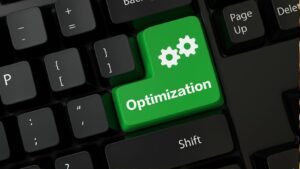Campaign Optimization Process
Campaign Optimization isn’t just a phrase; it’s a systematic procedure that guides marketers to maximize returns on their marketing efforts. Put simply, it’s the process of improving a marketing campaign’s performance, primarily through setting defined goals, analyzing performance data, and making evidence-based decisions to adjust the campaign strategy if required.
For instance, a company could be running a digital advertising campaign. Initial metrics such as click-through rates, conversion rates, and time spent on the landing page would provide important insights. If the conversion rate is low, the marketer might conclude there’s a disconnect between the ad copy and the landing page. Accordingly, they’d tweak the content, visual elements, or call-to-action to optimize the campaign.
Campaign Optimization serves as the backbone of any successful marketing strategy. With an ever-increasing number of marketing channels available, it’s paramount to not only choose the right channel but also to optimize it to achieve maximum efficiency.
Identifying metrics that matter most for a campaign and monitoring them enables marketers to sift out elements that don’t work, helping them avoid wasted ad spend. Moreover, it aids in improving customer experiences. By iteratively testing and tweaking campaign parameters, marketers can better resonate with their audience, thus boosting engagement rates.
For example, consider an email marketing campaign. Through campaign optimization, it’s possible to identify the best subject line, send times, and content format that elicit the most engagement from subscribers, thereby bolstering open rates and, ultimately, conversions.
Key Steps in the Campaign Optimization Process
Achieving campaign optimization involves several crucial steps. Each step is integral to achieving the efficiency and returns of marketing efforts.
In campaign optimization, defining the campaign goals stands as the initial step. The goals hold the roadmap for the entire campaign and determine the course of optimization strategies. For instance, if the goal is to increase brand awareness, strategies such as reaching broader demographics, capitalizing on social media platforms, or creating viral content are typically deployed.
Conceptualizing and setting up a rational campaign structure form the bedrock of effective campaign optimization. The structure incorporates elements like budget allocation, segmentation criteria, ad creative structure, and timeline. A well-designed campaign structure amplifies the efficiency of the optimization process, hence making the strategies like keyword bidding in PPC campaigns or creating diverse ad groups more effective.
The next step in the campaign optimization process revolves around identifying and selecting the appropriate target audience. It’s necessary to segment the audience based on varying factors like demographics, interests, online behavior, and buying patterns. For example, an e-commerce business selling fitness equipment may target health-conscious individuals aged between 20 to 35.
Determining the right channel mix stands crucial to the success of the campaign optimization process. The choice of channels significantly depends on the nature of the business, the product or service being promoted, and the characteristics of the target audience. Say, for a digitally native brand aiming at Generation Z, prominent channels would be Instagram and Snapchat, while for a B2B service provider, LinkedIn and email marketing might serve best.
Role of Data in Campaign Optimization
Data analysis emerges as a critical factor in the campaign optimization process. It aids in uncovering patterns and insight from sets of data, hence offering valuable perspective on customer behavior, trends, and preferences. For instance, analysis might reveal that a campaign’s click-through-rate (CTR) is significantly higher during weekends.  These actionable insights can then be utilized to optimize future campaigns. Notably, data-driven strategies exhibit a higher probability of success compared to those not leveraging data. This underscores the significance of data analysis in campaign optimization.
These actionable insights can then be utilized to optimize future campaigns. Notably, data-driven strategies exhibit a higher probability of success compared to those not leveraging data. This underscores the significance of data analysis in campaign optimization.
Data serves as a potent tool for propelling campaign improvement. Initially, it aids in identifying ineffective campaign elements that require enhancements. For example, if specific keywords are not driving traffic as anticipated, it’s these keywords that require reevaluation. Concurrently, it assists in spotting successful campaign elements to replicate and scale. Underpinned by data, marketers can continuously test, iterate, and refine their strategies, iteratively driving campaign performance upwards. As such, using data is pivotal to not only diagnosing campaign shortcomings but also promoting sustained improvement. Overall, it’s apparent that data plays a significant role in optimizing campaign strategy, contributing to superior marketing results.

